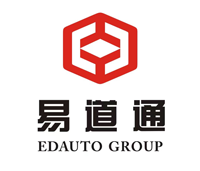In recent years, with the global emphasis on environmental protection and sustainable development, the new energy vehicle (NEV) market has risen rapidly. As the world’s largest producer and consumer of new energy vehicles, China’s export business is also expanding. The latest data shows that in the first half of 2023, China’s new energy vehicle exports increased by more than 80% year-on-year, among which electric passenger car exports were particularly prominent.
Behind the export growth
The rapid growth of China’s new energy vehicle exports is due to many factors. First, the improvement of the domestic new energy vehicle industry chain has made China’s domestically produced electric vehicles very competitive in terms of cost and technology. Second, the demand for new energy vehicles in the international market has surged, especially in Europe and North America, where many countries are actively promoting the popularization of electric vehicles to achieve carbon neutrality goals. In addition, the Chinese government’s support policies for the new energy vehicle industry have also provided a good environment for exports.
In July 2023, data released by the China Association of Automobile Manufacturers showed that in the first half of 2023, China’s total exports of new energy vehicles reached 300,000 units. The main export markets included Europe, Southeast Asia, South America, etc. Among them, Chinese brands such as Tesla, BYD, NIO, and Xpeng performed particularly well in the international market.
The rise of Chinese new energy vehicle brands
BYD is undoubtedly one of the most representative companies among Chinese new energy vehicle brands. As the world’s largest electric vehicle manufacturer, BYD exported more than 100,000 new energy vehicles in the first half of 2023 and successfully entered the markets of many countries and regions. BYD’s electric buses and passenger cars are widely welcomed in overseas markets, especially in Europe and Latin America.
In addition, emerging brands such as NIO, Xpeng, and Ideal are also actively expanding into the international market. NIO announced plans to enter the European market in early 2023 and has established sales and service networks in countries such as Norway. Xpeng Motors reached a cooperation agreement with German automakers in 2023 and plans to jointly develop electric vehicle technology to further enhance its competitiveness in the European market.
Policy support and market prospects
The Chinese government’s support policy for the new energy vehicle industry provides a strong guarantee for exports. In 2023, the National Development and Reform Commission and the Ministry of Industry and Information Technology jointly issued the “New Energy Vehicle Industry Development Plan (2021-2035)”, which clearly proposed to accelerate the international development of new energy vehicles and encourage companies to explore overseas markets. At the same time, the government also reduces the export costs of enterprises through tax cuts, subsidies and other measures to enhance the international competitiveness of enterprises.
Looking ahead, as the global demand for new energy vehicles continues to grow, China’s new energy vehicle export market has broad prospects. According to the International Energy Agency (IEA), by 2030, global electric vehicle sales will reach 130 million, of which China’s market share will continue to expand. The efforts of Chinese new energy vehicle companies in technological innovation, brand building, market expansion, etc. will lay the foundation for their further development in the international market.
Challenges and Responses
Although China’s new energy vehicle exports have a promising future, they also face some challenges. First, the international market competition is becoming increasingly fierce, and internationally renowned brands such as Tesla, Ford, and Volkswagen are also increasing their investment in the electric vehicle market. Second, some countries have put forward higher requirements for the safety and environmental protection standards of my country’s new energy vehicles. Enterprises need to continuously improve product quality and technical standards to meet the needs of different markets.
To meet these challenges, Chinese new energy vehicle companies are not only increasing their R&D investment and improving product technology, but are also actively seeking cooperation with international brands to enhance their competitiveness through technical exchanges and resource sharing. In addition, companies are also strengthening brand building and improving their recognition and reputation in the international market to win the trust of more consumers.
In conclusion
Overall, driven by policy support, market demand and corporate efforts, China’s new energy vehicle exports are welcoming new development opportunities. In the future, with the continuous advancement of technology and further development of the market, Chinese new energy vehicle brands are expected to occupy a more important position in the global market.
Email:edautogroup@hotmail.com
Phone / WhatsApp:+8613299020000
Post time: Apr-27-2025




